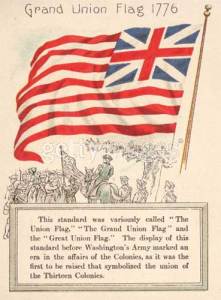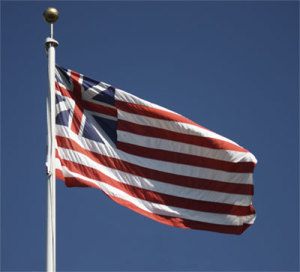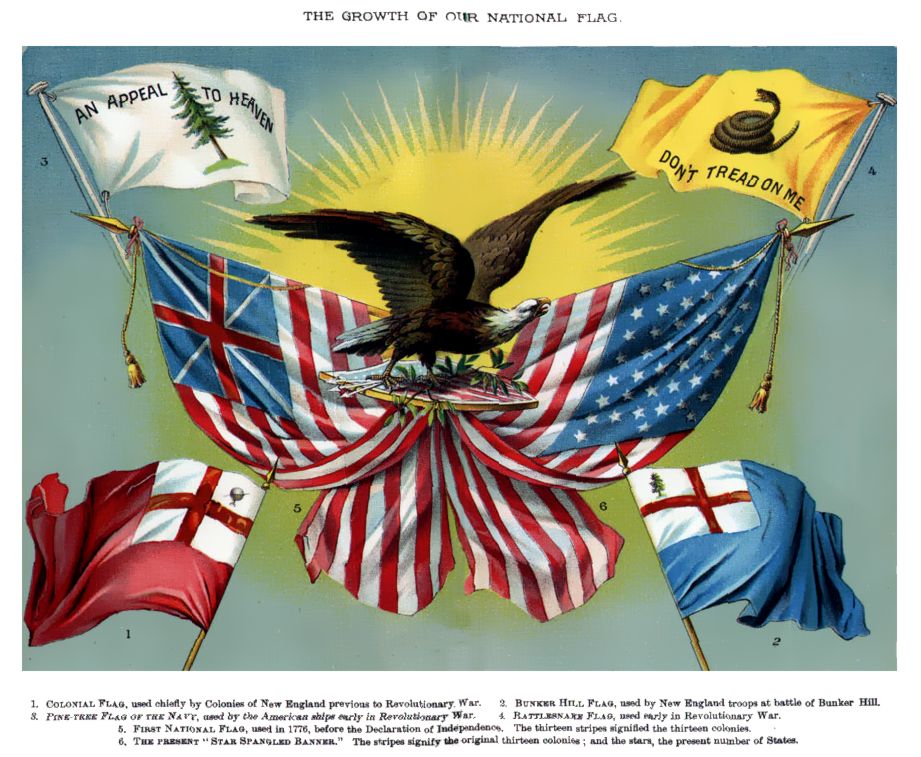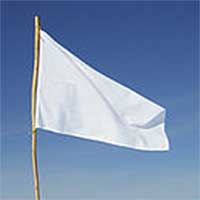George Washington and flag vexations
 George Washington, it is said, never told a lie. But some fibs have been told about him, and one of them might involve an early American flag that was hoisted – or was it? – 239 years ago on the first day of the year.
George Washington, it is said, never told a lie. But some fibs have been told about him, and one of them might involve an early American flag that was hoisted – or was it? – 239 years ago on the first day of the year.
On January 1, 1776, Washington lifted a flag at his headquarters, then near Cambridge, Massachusetts. Author David McCullough recounts the scene in his book, “1776,” writing, “With the crash of a 13-gun salute, [Washington] raised a new flag in honor of the birthday of the new army,” called the Continental Army.
 The flag consisted of 13 stripes of alternating white and red. Where the American flag now has a field of stars, the British Union Jack was shown. (Later, the flag was dubbed the Grand Union flag, a term not used until the mid-19th century.)
The flag consisted of 13 stripes of alternating white and red. Where the American flag now has a field of stars, the British Union Jack was shown. (Later, the flag was dubbed the Grand Union flag, a term not used until the mid-19th century.)
While some scholars doubt the veracity of the story, one thing is for sure. During the American Revolution, Washington was constantly dealing with flags. Often, however, they were plain white truce flags, used to allow persons to cross boundaries and not be fired on by the opposing sides.
In many letters written during the conflict, the Father of Our Country was vexed with issues involving such flags. On January 7, 1779, for example, he complained about the “too frequent” use of the white flags by boats from Pennsylvania and New Jersey.
In a letter, he “pointed out the inconveniences of peoples coming almost daily with permissions from them to go cross rivers into New York.” Each passage necessitated a truce flag and an officer to accompany it. Washington’s solution was to allow passage only on the first of the month. Anyone who wanted to travel at another time, he said, would have to wait.

That same summer, encamped at West Point, the general had to mediate a dispute over white flags. One of his subordinates, a German colonel named Wurmb, objected to another officer using “a white handkerchief tied to a little stick” as a truce flag.
 Washington, who had more significant things to deal with, ordered a third officer to “reprobate so gross a violation of a flag” and “take effectual measures to discountenance the indecent irregularity of…Wurmb’s behaviour.”
Washington, who had more significant things to deal with, ordered a third officer to “reprobate so gross a violation of a flag” and “take effectual measures to discountenance the indecent irregularity of…Wurmb’s behaviour.”
To the future first president, the German’s actions needed correcting so that the tradition of a white flag would remain sacred – even when that flag was a hankie.
